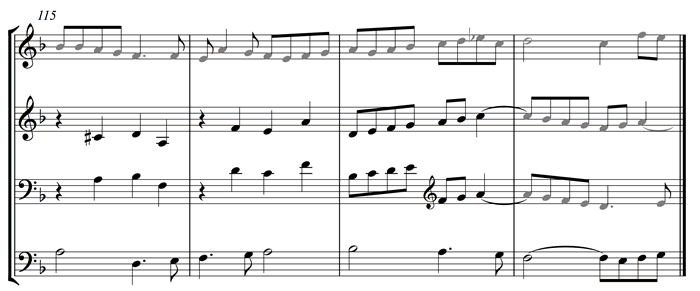Contrapunctus X from the Art of the Fugue
José Rodríguez Alvira
Combined Subjects
After the two expositions, Bach begins to combine both subjects. The first time they appear in measure 44 in the alto and tenor voices:
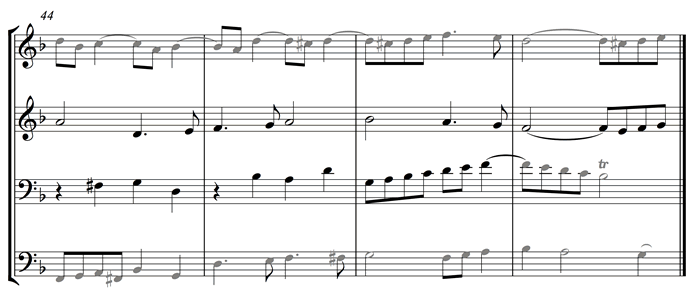
In measure 52 both subjects reappear in the alto and bass transposed an ascending fifth and inverted at the tenth (see Invertible Counterpoint for more information). Let us see this process step by step.
Measures 44 and 45:
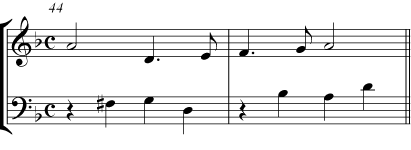
Measures 44 and 45 transposed an ascending fifth and inverted:
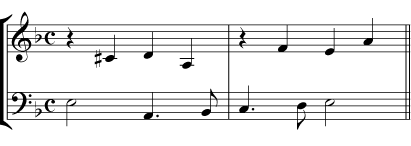
Now we compare transposed and inverted measures 44 and 45 with measures 52 and 53:
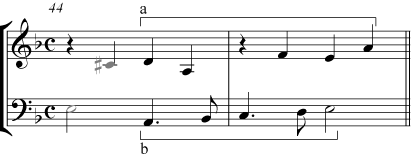
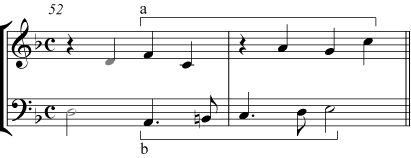
At the left we have measures 44 and 45 transposed and inverted. At the right we have measures 52 and 53. Beginning with the bass we can see that both passages are identical (letter b) except for the first note and Bb and B natural.
If we compare the upper voices we find that from the second note the passage is transposed an ascending third which means that inversion at the tenth is being used. For a detailed explanation of the inversion at the tenth see Invertible Counterpoint.
We can also determine the type of inversion in the following way: the second subject is transposed a descending fourth an the first and ascending seventh. We add 4 + 7 and subtract 1 and the result is 10. This means inversion at the tenth:
(4 + 7) - 1 = 10
The complete excerpt with all four voices:
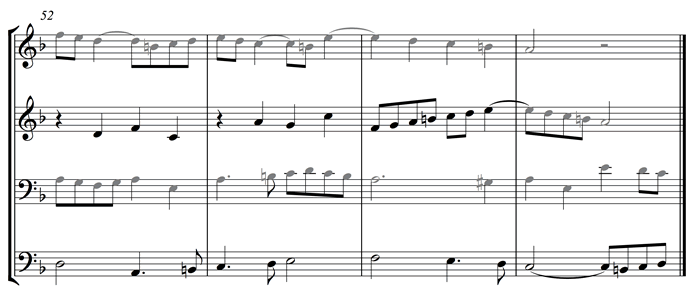
In measure 66 we find another example of inversion at the tenth. The tenor uses the same notes as the alto in measure 44, but the soprano is again transposed an ascending third.
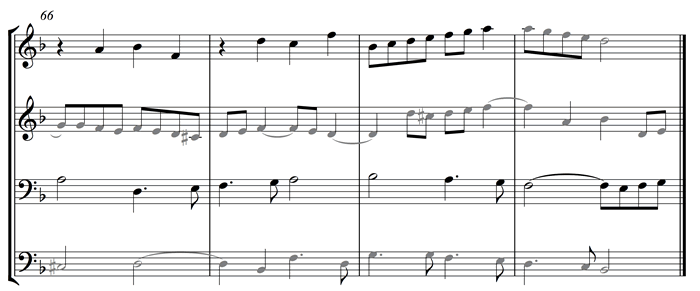
In measure 75 the soprano plays the second subject while the bass plays the first subject. The alto and bass are the alto and tenor of measure 44 transposed an ascending third. The soprano doubles the alto in sixths and is harmonically similar to inversion at the tenth:
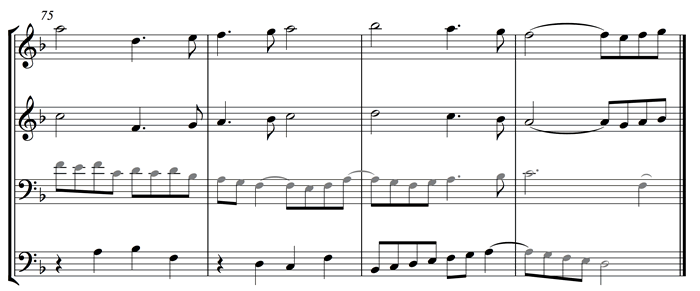
In measure 85 the soprano and alto present the first subject in thirds and the bass the second subject. The alto uses inversion at the tenth while the soprano uses inversion at the twelfth. The alto should have started with a A, but begins with an G for harmonic reasons.
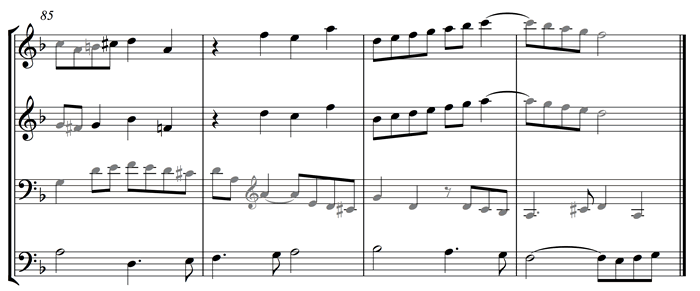
In measure 103 the second subject appears in the soprano while the bass and tenor present the first subject in thirds. The bass is inverted at the octave and the tenor at the tenth:
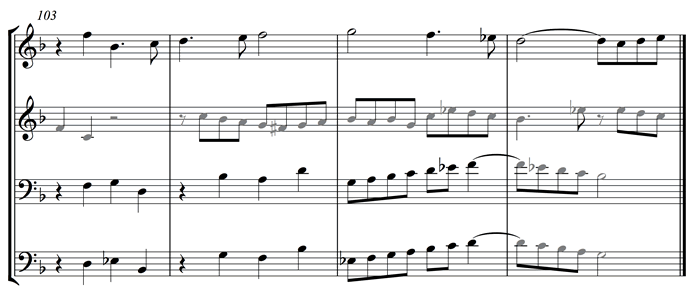
Finally in measure 115 the second subject appears on the bass and the first subject in the tenor and alto. The relation soprano-tenor is harmonically similar to the inversion at the tenth:
